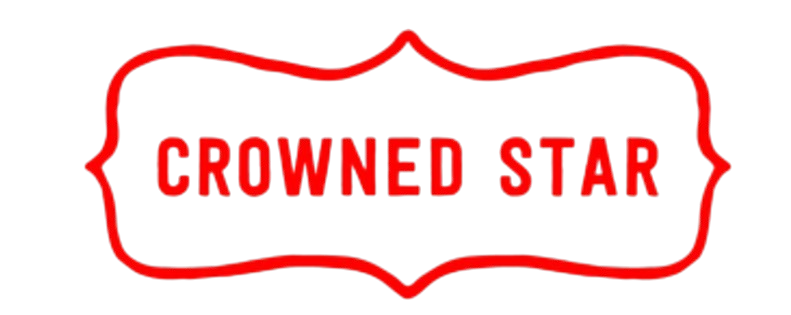CHELSEA
🔥🚨VAR overruled this penalty given to Fluminese for handball by Trevoh Chalobah 👀 Was the Chelsea man lucky to get away with one here ❓
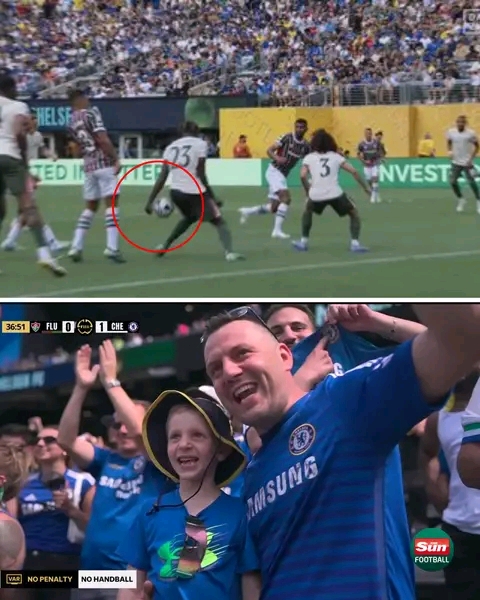
Absolutely, let’s break this down with as much detail and nuance as it deserves — because this was one of those moments in the game: tension at a boiling point, the referee pointing to the spot, Fluminense thinking they’ve been handed a golden opportunity, and then — enter the drama of VAR. 🚨
—
🎥 VAR Overrules Penalty for Fluminense: Trevoh Chalobah Handball Incident
The situation you’re referring to involves a high-stakes handball call against Trevoh Chalobah, who was playing in defense. Let’s go through the full sequence: from the live action, the referee’s decision, the VAR review, and the complex layers of interpretation that led to the penalty being overturned.
—
📸 The Incident – What Happened Live
The ball was whipped into the Chelsea penalty area with pace — a dangerous, curling delivery that had the defenders backpedaling. It wasn’t a clean situation. There were bodies flying, arms raised, players jostling for position.
Trevoh Chalobah, caught in a reactive defensive movement, appeared to have the ball glance off his upper arm as he attempted to jump and reposition his body.
From the referee’s angle, it seemed fairly straightforward at first glance:
The arm was extended, slightly away from the body.
The ball changed direction upon contact.
The Fluminense players immediately appealed.
💥 Referee points to the spot.
Cue chaos, frustration from the Chelsea players, and hopeful energy from Fluminense. But then — VAR intervenes.
—
🎛️ The VAR Review – Layer by Layer
This is where things get really interesting. The use of VAR (Video Assistant Referee) is supposed to bring clarity and fairness, but in moments like this, it also brings deep interpretation and subjectivity.
🧠 VAR Criteria for Handball
To understand why the penalty was overruled, we have to apply FIFA’s modern handball criteria, particularly when it comes to deflections and body positioning. VAR officials looked at several key questions:
1. Did Chalobah deliberately handle the ball?
No. His arm movement didn’t indicate intent.
He was in mid-air, adjusting his balance, and the ball came at him from a close distance.
2. Was his arm in an unnatural position?
This is the tricky part. Yes, his arm was somewhat extended, but…
According to FIFA’s latest guidance, arms used for balance or during natural jumping motions are often not penalized, unless clearly used to block the ball deliberately.
3. Was there a deflection?
Upon closer review, it appeared the ball deflected off another Chelsea player or even Chalobah’s own thigh before glancing off his arm.
If a ball hits a defender’s body first and then hits their arm, that is not usually penalized — especially if the arm isn’t clearly blocking a goal-bound shot.
4. Did the arm make the body “unnaturally bigger”?
The officials judged that Chalobah’s arm position was within the natural silhouette of a jumping player.
So, after reviewing all the angles and slowing the footage down, VAR advised the on-field referee to overturn the decision. The referee took a look at the pitch-side monitor, agreed, and rescinded the penalty.
—
🎲 Was Chalobah Lucky? Or Was It the Right Call?
Ah, the million-dollar question.
🧵 Yes – He Might Have Been Lucky, Just a Bit
From a fan’s perspective — especially Fluminense fans — it definitely looked like a handball live. The ball hit his arm, and in those moments, the perception of intent doesn’t matter to the crowd, only the visual impact.
So in that sense:
Chalobah was fortunate that VAR caught the deflection.
He was also lucky that the referee didn’t stick with his original call (which often happens when it’s marginal).
These tight decisions can go either way depending on how the laws are interpreted on the day. In a Champions League or Copa Libertadores final, that call might have stood.
🤔 No – It Was a Sound, Law-Based Decision
On the flip side, from a strictly law-based, VAR-supported perspective, the right outcome was reached:
There was no deliberate action from Chalobah.
The deflection and his natural motion made it hard to justify giving a penalty under current FIFA guidelines.
VAR did exactly what it’s supposed to do: correct a potentially game-changing mistake.
So while it might feel like Chelsea and Chalobah “got away with one,” in reality, the laws of the game (especially after the 2021/22 updates) are designed to protect defenders in exactly this type of scenario.
—
⚖️ Final Verdict
Trevoh Chalobah walked a very fine line in this moment — and while he may have looked guilty at first, VAR’s detailed frame-by-frame analysis revealed key nuances that overturned what appeared to be a clear handball.
Was he lucky? A little, yes. Many referees might’ve still given it.
Was it the correct decision? Technically, yes — based on modern handball laws.
Was it controversial? Definitely. Because football’s interpretation of handball continues to frustrate and divide opinion.
—
🔚 In Summary:
VAR correctly applied the current laws of the game regarding deflections, intent, and natural body position.
Trevoh Chalobah escaped what could’ve been a pivotal penalty.
The decision sparked debate — but ultimately maintained the spirit of fairness that VAR is meant to bring to the game.
This moment will be discussed in post-match shows, fan forums, and tactical breakdowns — because it’s one of those grey areas where law and perception don’t always align perfectly.
Would you like a
visual breakdown of the handball law and positioning examples, or even a mock-up of how Chalobah was positioned? I can create that too.
-

 Barcelona8 months ago
Barcelona8 months agoVideo | Barcelona’s deceptive free kick against Athletic Bilbao
-
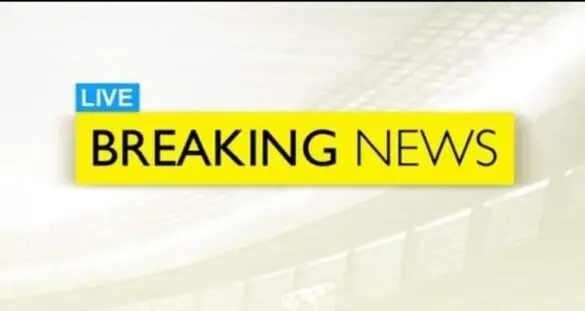
 Manchester United8 months ago
Manchester United8 months ago“I was forced to make that call…the wrong call wasn’t really my decision but they made me do it” I couldn’t do anything about it cause I’m only an official not the owner of the league…They wanted Manchester United to win Liverpool by all means💔”…those were the words of Micheal Oliver the Referee of the Liverpool Vs Manchester United match with strong claims that it wasn’t his decision rather be was ordered to🙀‼️‼️
-

 CHELSEA8 months ago
CHELSEA8 months agoAm tired of this place i want to leave” – Club make bid to sign £380k-per-year Chelsea ace who wants Stamford Bridge exit
-

 LIVERPOOL8 months ago
LIVERPOOL8 months agoLiverpool has officially completed the sensational signing of Spanish international Dani Olmo
-

 CHELSEA8 months ago
CHELSEA8 months agoIt will be amazing if he joins me here at Stamford Bridge. Even though it seems highly unlikely, it won’t kill me to try to convince him to join me here. I would very much love it if he joins me” – This is according to Cole Palmer as he has weighed in on the speculation surrounding Kobbie Mainoo’s potential move to Chelsea. The young midfielder has been the subject of transfer rumors, and Palmer’s reaction has added fuel to the ongoing discussions.
-
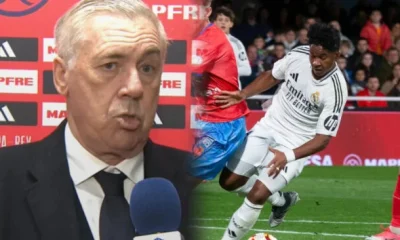
 Real Madrid8 months ago
Real Madrid8 months agoAncelotti drops everything on Endrick after the carton facing Minera : « It must be.. ».
-
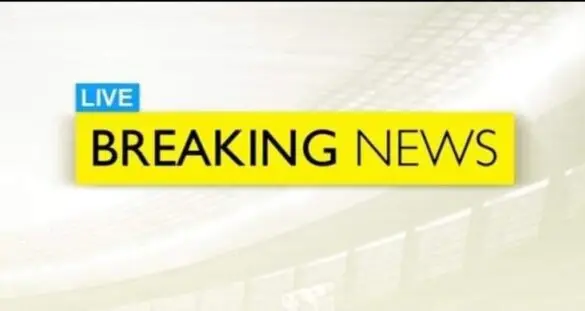
 Manchester United8 months ago
Manchester United8 months agoRuben Amorim isn’t a baby coach so he should have known best not to start this player against Liverpool,you’ve tried him enough and he’s not giving any good results just get him replaced already, at first I thought it was Marcus Rashford causing the problems but I guess I’m wrong…keep starting him and he’ll get you sacked sooner than expected!” sports pundit Gary Neville speaks on Manchester United Player’s performance against Liverpool today
-
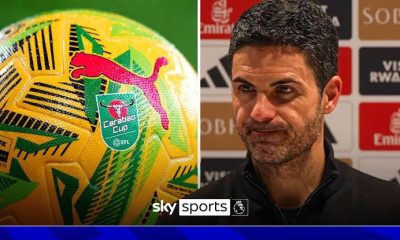
 ARSENAL8 months ago
ARSENAL8 months agoBREAKING NEWS: Arteta Tells £55M Arsenal Star to Find a New Club After Costly Newcastle Error
